New Scenery and New Potentials
Last week, I might have jumped the gun. I followed my friend’s advice and pretty much stuck solely to the manual mode on my camera. As a result, many of my photos turned out quite poor. They were incredibly dark and contained no colour; they were solely black and white. I was frustrated but optimistic, the pictures I had shot on the auto setting turned out just fine so it had to be something that I was doing wrong, not the camera having a malfunction with colour. I had done some research on shutter speed and aperture but am still new to their use and how they look in a variety of situations. So in order to work on my understanding of these terms and how I could customize their use with my camera, I tried taking different styles of photos, specifically portrait photos. This week I was in Kimberley, which is just northwest of Fernie. I took close-up portrait photos using the S, A, and P modes of my camera. The S mode meant I could control shutter speed, the A mode meant I could control the aperture, and the P mode (which I just recently discovered) meant I could take photos using a tracking focus. The P mode will come in handy in the future in case I see any moving animals while biking or hiking.
While biking around the Kimberley nature park, I stumbled upon a small lake that I thought might have some opportunistic spots for close-up shots. As I rested my bike against a tree and pulled out my camera, a small turtle popped up onto a small log in the lake. Instantly, I knew they would be my model. I took a couple of photos of the turtle using the A mode as I had mistaken it for an auto setting at that time, probably due to my excitement of seeing the turtle so I did not alter the aperture settings for these photos, luckily they were perfect. They were set to F8.1 which means the aperture is very small (a small pupil).
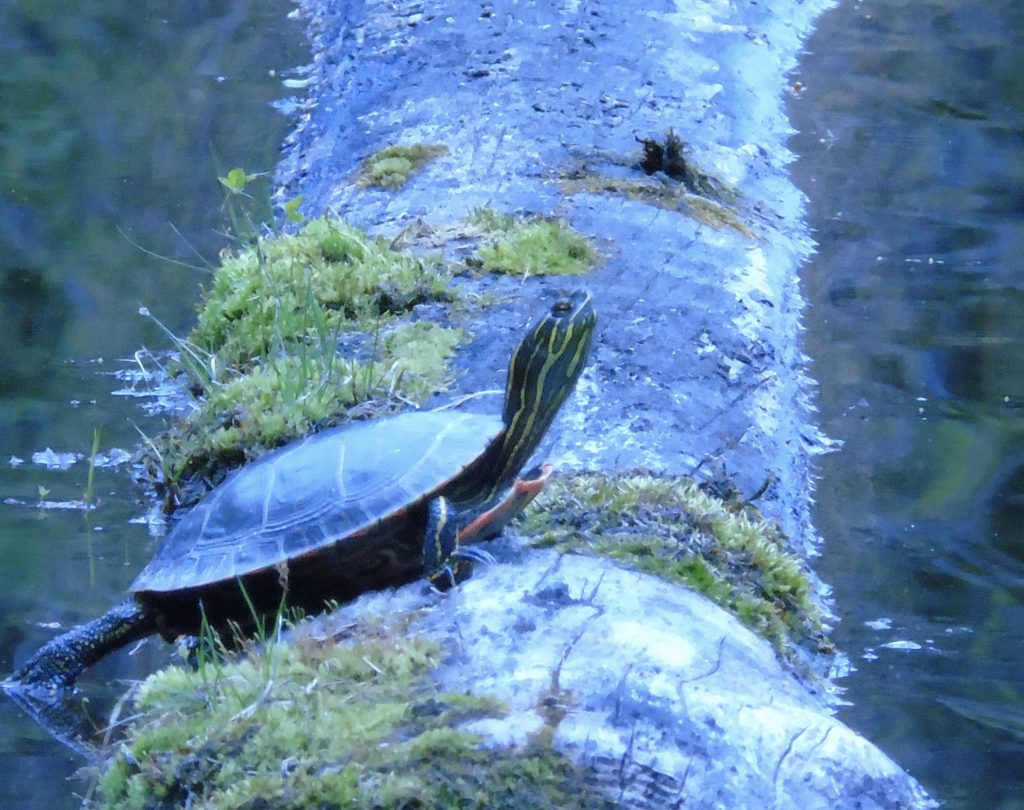
Shutter speed: 320, Aperture: F8.1 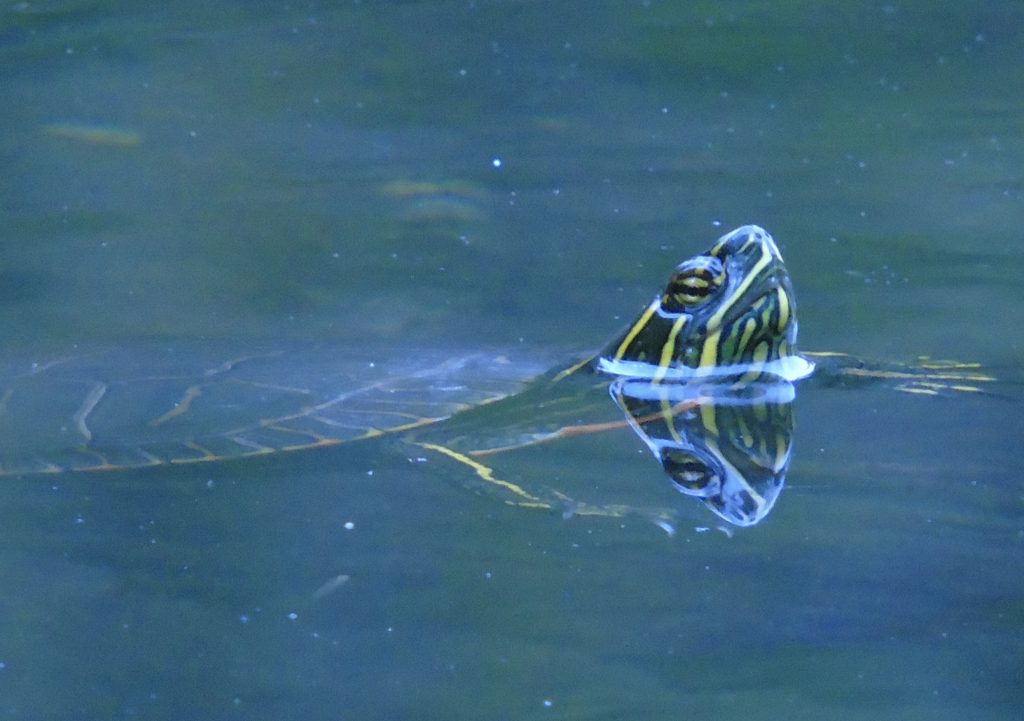
Shutter speed: 200, Aperture: F8.1
By accident, I switched over to P mode which is an auto setting that controls the aperture and shutter speed but allows me to turn on tracking focus. It ended up resulting in a fantastic photo that allowed me to see what the potentially proper settings looked like for this situation. I also apologize for how some of these photos look as I have to heavily condense them down for edusites to allow them.
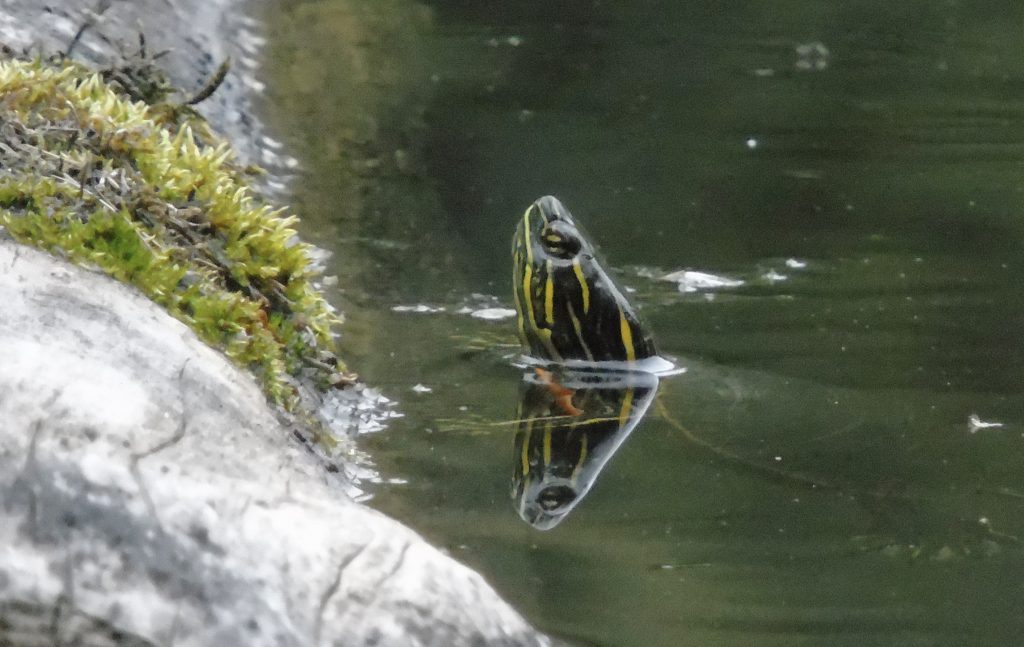
Still yet when I tried to use the manual setting (M mode), all of my photos were black and white no matter what the setting was.
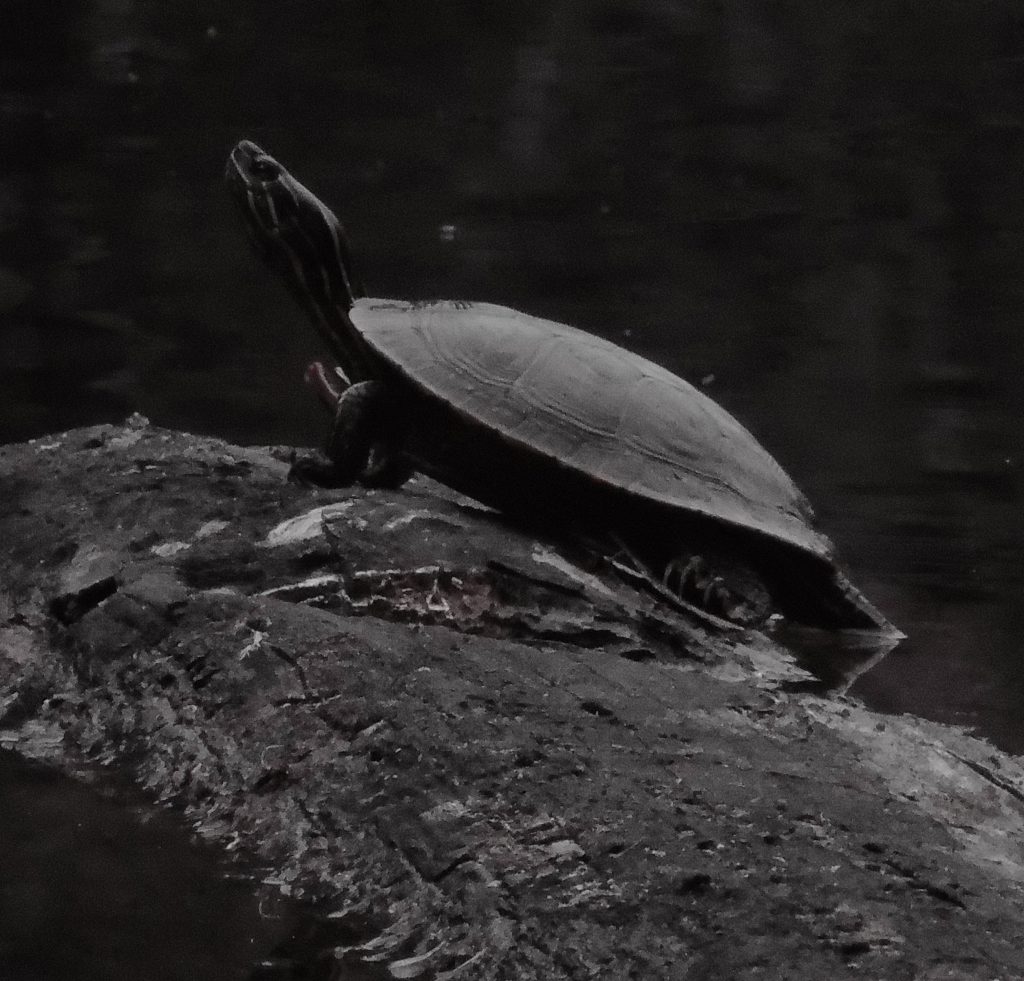
Shutter speed: 1500, Aperture: F6.0 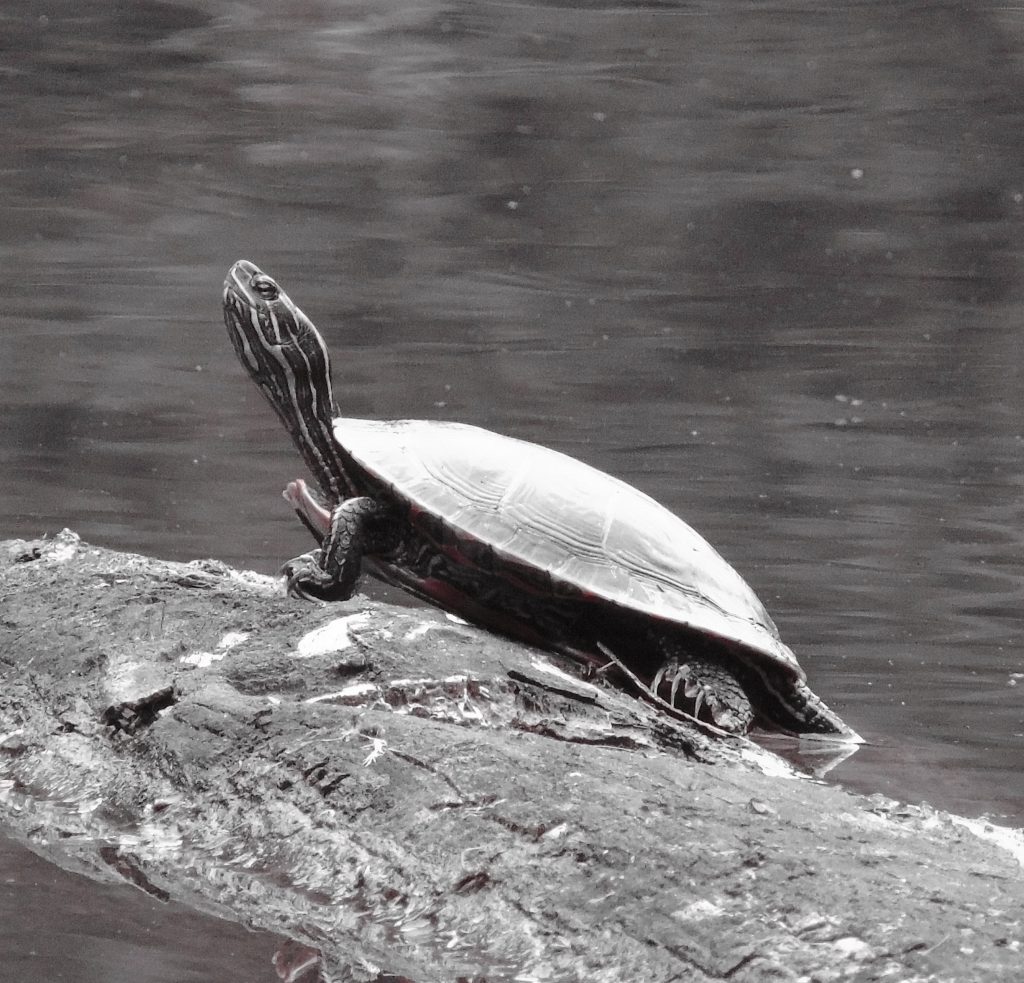
Shutter speed: 250, Aperture: F6.0
In the midst of my frustration, I began pushing random buttons on my camera hoping that something would fix my problem. When the menu popped up on my camera’s screen, I noticed something that was called “Picture effects.” When you press the menu button on this camera, you can still see what the lens sees. Upon noticing “Picture effects,” I moved the dial one to the left and saw the screen change from black and white to colour. IT WAS STUCK IN THE BLACK AND WHITE SETTING. I moved the dial to the left until I saw the words “No effect” which meant that I was finally seeing exactly what I wanted to be seeing on my camera while using the M mode. These are the photos I took using the M mode which I would say turned out a lot better than any other photos I have taken.
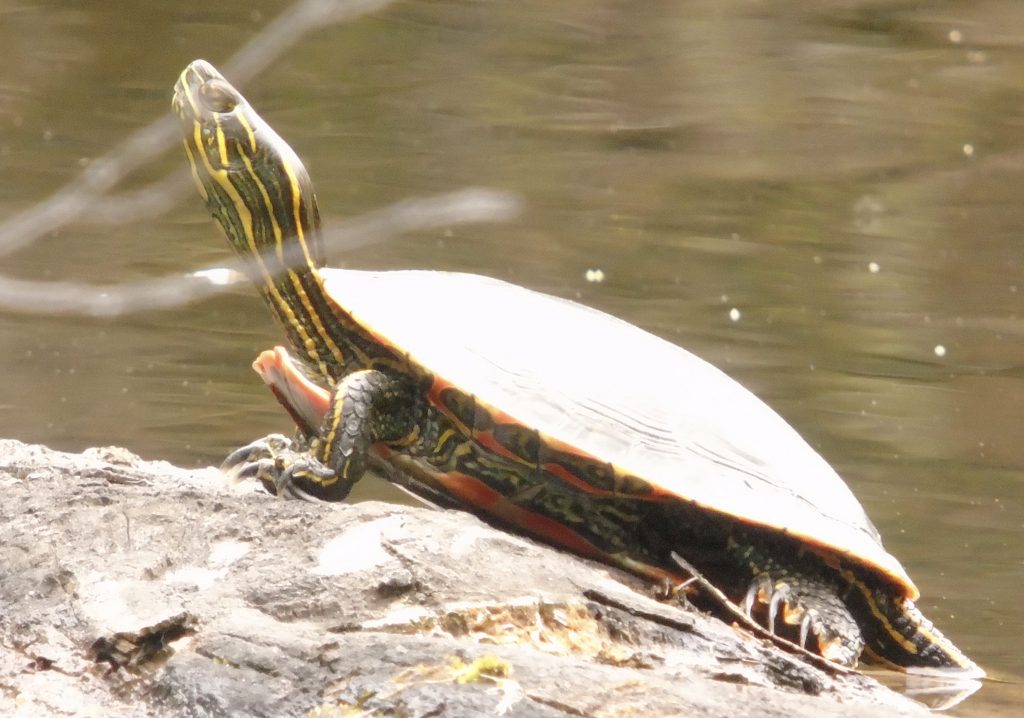
Shutter speed: 100, Aperture: F8.1 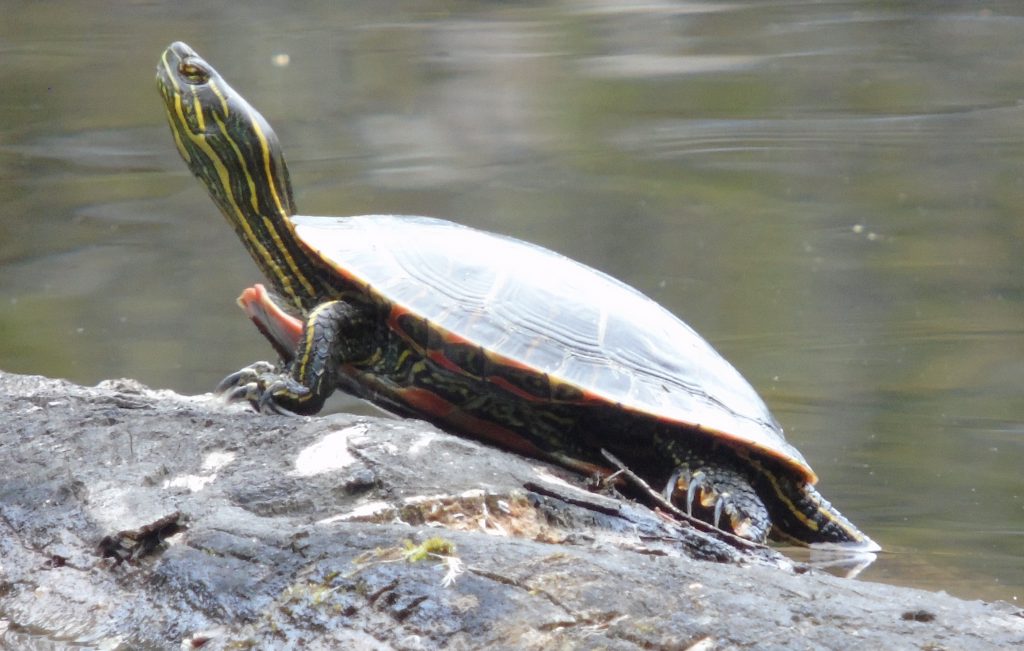
Shutter speed: 125, Aperture: F6.2
With these photos and having the ability to change the two major settings, I can see the red on the turtle’s underbelly a lot better than I could before. Now that I can alter shutter speed and aperture with confidence that they will contain colour, I can alter how I can take pictures of different settings with complete control of my camera and how the pictures will turn out. Next week I hope to find a larger model such as a deer, moose, or elk. Considering my location and what I see when I don’t have my camera with me, I think I will be able to do that.
9 thoughts on “New Scenery and New Potentials”
Wow Chayce! I love how much effort you put into these pictures. I took photography class for 2 semesters in high school and man I felt the same as you – way too many options and I didn’t know what they did. It takes a lot of research and practice to know what to change each time you want to take a photo. Props to you for putting your all into this! BC would be a perfect place to capture some very cool pictures! 🙂 I look forward to seeing your bigger animals this week!
Thank you Kiera! It was definitely quite the process just figuring out how I should take a proper picture lol. There are too many things to consider! Thankfully my scenery is very kind to me and begs to be looked at.
Hi Chayce,
This definitely looks like a lot of work! As a person who struggles with moderate colorblindness, I’m always amazed at the attention to detail photographers put into their pictures – not just the colors, but all of the settings too! I can’t imagine trying to figure all of that out, but if I do, I’ll definitely reference your learning project! Keep up the good work!
Hi Benton,
Thank you very much! I’m very happy to hear my blog can provide some insight for you. I’m definitely still putting all of the pieces together but I’m having a great time doing it. Let me know if you ever have any questions!
These are absolutely stunning! Photography is a huge passion of mine! I took classes in high school and after that, I just kept going. I tend to be lazy and use the auto mode a lot, but overall, it always turns out better than when I would use my phone. May I suggest playing with the shutter speed to a longer speed that way you get some movement. You can make really cool pictures if you’ve steady hands or a tripod. Keep up the good work Chayce!
Hi Kendra, Thank you! When I first started taking pictures with this camera, I was worried the pictures I take on my phone would turn out a lot better, but I have been thoroughly surprised with how well the pictures I take with my camera have turned out. I love your idea of playing with the shutter speed for long periods of time. I’ll look into how to do this on my camera and hopefully I can get some really nice night shots with the stars.
Hi Chayce,
These photos are amazing! You clearly put a lot of work and effort into capturing these beauties! I have always been jealous of people who can take aesthetic photos as most photos I take don’t turn outright. That being said I have also never purchased a professional camera to learn from! I appreciate how you explained to us in detail what each mode or setting on the camera meant rather than just telling us what they are, this really shows you know and understand what you are talking about! Again, I love these pictures wildlife can create the most beautiful photos showing how amazing this planet really is!
Noelle
Hi Noelle,
Thank you so much! My effort was compounded with great luck in terms of lighting and the availability of my aquatic model. I was definitely quite intimidated when I started out but with time I have grown to love my new hobby. Next week, I’ll try and provide more information on my camera in general and all that it can do.
Hey Chayce!
I love the black and white photo of the turtle! You have clearly done your research to produce photos of such great quality within only a few weeks of working on the project. I also love how the turtles reflection can be seen in the water, this shows great symmetry and would be a cool project for students to do to explore symmetry. Good luck on the rest of your photography journey!